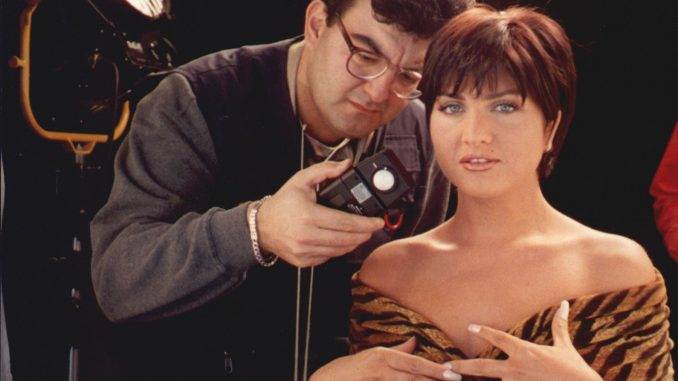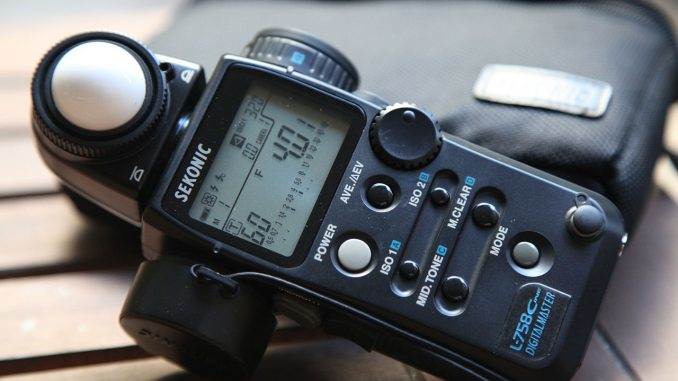When shopping for all the high quality gear that you’re going to need on your photo excursions or studio sessions, you’ve probably asked yourself the question – What does a light meter do? You’ve probably come across this piece of equipment that you’ve seen the pro’s use, but have little knowledge about yourself.

You’ve seen a light meter used in all the instructional videos….you’ve watched and definitely seen it used by photographers in movies, but when it comes time to lay down the money on your very own, you’ve probably found yourself wondering exactly how to use a light meter.
Essentially Light Meters Measure Light
Very simply put, a light meter is used to tell you how much light is hitting a subject at any given point. Once you take your measurement and get your value, you can use it to determine your shutter speed, f/stop and film speed.
This kind of information is obviously some of the most important stuff that you can know about your image, but as you’ve no doubt already noticed; your camera can give you the exact same numbers right in your viewfinder.
Obviously, you’re not the first person to realize this, yet you still see the professionals using meters. So again, you’re probably asking yourself, “What does a light meter do and how is it different from what I already have?”

Incident vs reflected light
The most common use for a light meter is to read incidental light that’s hitting a subject. When you’re using an incident meter, it means that you’re measuring the light that is hitting something, rather than the light that is bouncing off of it. Essentially, you’re giving yourself a lot more control over your subject without relying on the light that’s already been to the subject and back to you.
If you’re using your in-camera meter, measuring incident light is completely impossible.
You can only get a sense of the reflected light, and even that is for the overall image as a whole. You can’t accurately judge specific points of the subject or the difference between your key and fill lights.
When relying on your in-camera meter, you’re running the risk of having your images turn out flatter and less dynamic than being backed up with the information from a light meter.

Getting depth in the studio
The most efficient use that you can get out of a light meter is in the studio environment. A photographer’s main job in a completely controlled space is to really become a painter with his or her light. When you have to power to manually adjust your lighting placement, intensity and even temperature, you want everything to be perfect.
Much like a chef giving each and every ingredient the utmost attention for a simple dish, you can make sure that your images come out precisely as you imagine them.
This is where the light meter comes in. This device will you give you an accurate and individual readout for you key, fill, kicker, back and background lights with the push of a button. It’s very important to remember that the contrast sensitivity of the human eye is much higher than that of any camera. As such, although thing may look spectacular to you, they may not read on camera.
What Does A Light Meter Do For Me?
So, now that you’ve answered “What does a light meter do?” it’s time to decide whether or not you should use one. The answer is yes. Using a light meter will add depth to your images and give you a greater understanding or what you’re capturing. While you can get away with not using one, if you want to produce the very best, then a light meter is for you.

Leave a Reply